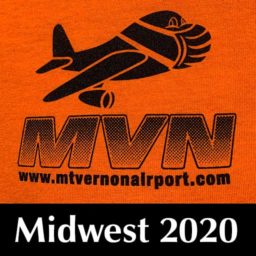
This story isn’t about that famous brand.
To most who glance at the nearby photos your first instinct is see a Quicksilver. A closer inspection shows otherwise. I spoke with leaders of Tri-State Kites — Andy Alldredge and Tom Smith, representing the second generation of Mark Smith’s operation. Mark Smith passed away in 2015.
Legendary Tri-State Kites*
To a large network headquartered in Mt. Vernon, Indiana, Mark Smith is something of a legend. Known for continually improving his airplanes, he was always inventing and innovating.
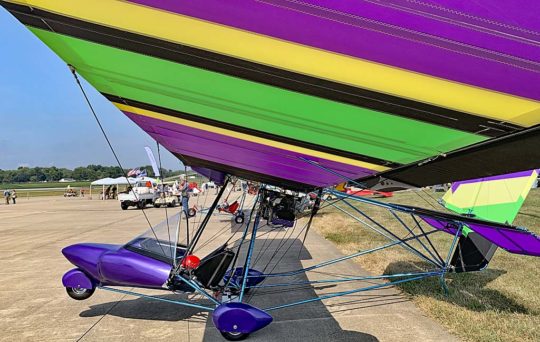
Tri-State Kites’ selling of Quicksilver brand aircraft went on for many years; Mark was once one of Quicksilver Aircraft’s top dealers. Throughout, he was improving, tweaking.
Perhaps it was inevitable that this would evolve into the manufacture of whole Quicksilver-like airplanes built of the numerous changes Mark had engineered over the years.
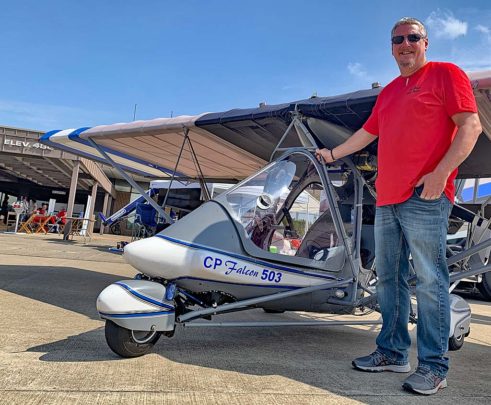
Directly from their matter-of-fact website, “Modifications to this sturdily-built ultralight abound (they refer to those thousands of Quicksilvers sold). Most are not terribly expensive and create a much more flyable plane. Recommended changes would be lower tail tubes and the tapered stabilizer. They also sell dihedral-reducing cablesets for wire-braced Quicksilvers; earlier models used a large amount of dihedral to enhance the rudder-and-elevator-only controls. Tri-State Kites said, “These install without major modifications.”
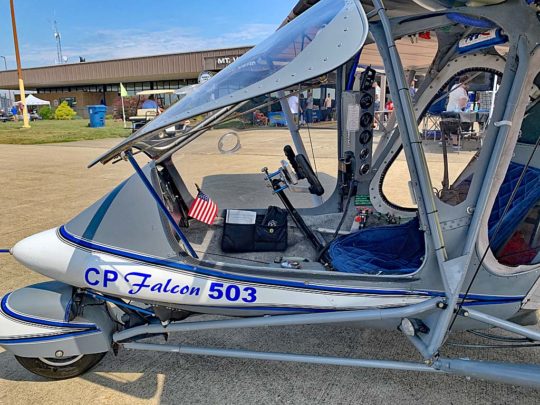
Today Tri-State Kites is actively building and selling entire aircraft. Call them a “Quick” or a “Smithsilver” — this is now its own brand of aircraft. Some are Part 103 eligible. Andy assured me single seat models can qualify.
Tri-State Kites reported a active and complete business with sales, training, and maintenance. They even offer on on-site “hotel” for customers to use. Contact Andy Alldredge by email or email Tom Smith.
They Do It All
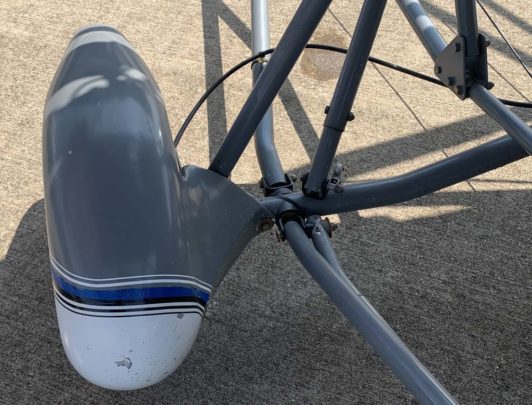
I did interviews with Andy Alldredge about Tri-States’ business and his Falcon 503 project plus Tom Smith. Look for them later this year.
* Why “Kites” in Tri-State Kites?
When hang gliders were a lot simpler than today’s sophisticated models, they were often called “kites,” a term that followed even earlier boat-towed rigs that literally had to be tethered like a kite to stay aloft. Even the earliest hang gliders were more than mere kites but the name was quick and easy, and it stuck. Mark Smith started in this business so long ago that “Kites” still worked as a snappy reference, even if it may sound odd for an airplane company in the age of LSA.
For an interesting view of the early days of ultralight aircraft in the USA, read Tri-State Kites’ website. It’s full of folksy tales such that even though Mark Smith is no longer with us, you get a sense of the man from reading his words.


Thank you again, Dan. The world needs more people like you. Unlimited patience with old farts!
Trying to find out more about Silversmith Ultralights. No website found. Using “Tri-State Kite Sales,” a site that gives a lot of history but no business. Nothing about anything they sell.
Robert: As with your other comment, it is Smithsilver (like Quicksilver) not Silversmith. ••• Yes, their website leaves a lot to be desired regarding what they sell. Please use the email addresses on their website or in the article. Good luck! They are great guys and do a good job but their website badly needs to be updated.
Thank you Dan, nice article.
I am a long time customer of Tri-State Kites and a friend of the family.
I have had the guys at Tri-State Kites build two new aircraft for me and work on several others over the years.
I can’t say enough about them. But, thank you so much; I really enjoy reading your articles. Thanks again…